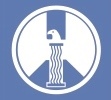In Zambia, as well as in the rest of Africa, western materials and construction techniques are rapidly replacing traditional ones, even in remote areas of the country. Traditional materials and construction techniques have connotations of being substandard with a significant number opting to use imported materials and even foreign consultants. With the influx of Computer Aided Design (CAD) packages , globalisation and architect collaborations with international clientele, it is evident that in just a few generations traditional techniques will continue not to be passed on to future generations and this part of Zambian culture could only a memory.
The Future of Design Incorporating
Nature using a Taxonomy
Taxonomies are based on organizing things with shared characteristics. Zambia has a rich culture with 73 tribes existing peacefully and a tremendous mixing of cultures, which includes a mixing of architectural styles. These should be preserved via documentation and understanding why these traditional architectural relations work. It is imperative to see that traditional materials have the strength, comfort and beauty of modern applications. Once we discover and expose the content and context of all the current designs, this would inform all the next designs. A change in perception has the potential of supporting a vernacular architecture. Adding context to taxonomies reveals not only what things are, but also expresses what they are for, what they do, and how they work. People must be convinced that these structures are safe, structurally sound, beautiful and less expensive in the long run. Only then will people build in the vernacular, which is close to nature and is region specific.
The embracing of vernacular architecture with keeping at par with advancements in CAD can sustain-ably lead Zambia into the future.
Nature fundamentally designs by taking the best existing solution to a problem and iterating. The future of architecture is approaching an age where the entire building team, which could be based in several countries and of diverse disciplines can operate seamlessly as though they are under one roof by using the same Building Information Model (BIM) and infinite cloud computing, where one change in one area of the 3D model proposed by any member of building team, will simultaneously initiate a change in all associated consultant drawings whether it be structural, bill of quantities, mechanical or interior design views. Globally technology is heading towards the sophistication levels of nature, where instead of starting a design project from scratch, we could start by accessing every design, schematic, asset, and idea that has ever been created, to help solve one particular unprecedented design challenge. This can be done if we have a (3D) digital library to refer to, as being done presently in some mega western cities, with the aim to better plan future urban developments, while integrating daily, monthly, seasonal and annual data.
Real-time rendering, such as with Twinmotion, allows the client to virtually walk around their proposed structures, test out their kitchen space or virtually walk around the presidential suite of a new five star hotel, months or years before constructions are complete on site.
Added to this BIM models would be able to reference local mechanical engineering textbooks, building codes, supplier catalogues and real world examples, to solve our construction problems using our context, rather than coping and pasting foreign ideas.
Let CAD Do More of the Work for You
Zambian designs need to explore all of the solutions that optimize performance for our local conditions. CAD system eLearning and installation files can be found online at times for free. Added to this investments in conferences, such as the annual Autodesk University (AU) conferences, where over 16,000 attended last year (#AU2014), representing at least 74 countries around the world. Zambian designs need to evolve. But first we have to stop “telling the computer what to do,” and instead, start “telling the computer what we want to achieve.” With Generative Design, by giving the computer a set of parameters that express your overall goals, the system will use algorithms to explore all of the best possible permutations of a solution through successive generations, until the best one for that particular typology and situation is found.
Create Living Designs that Sense, Respond and Collaborate
Zambia, like the world, is constantly changing and yet our designs are dead designs or planned obsolescence that are not keeping up with these changes. The current solution, as with everything that is no longer useful, is to just throw out the old and bring in a new building. The fundamental difference is that the things we design now and make in the future must do three things: Sense, Respond, and Collaborate. A lot of people would call this the Internet of Things. Because the term implies a false hope of an emergent experience, what we really need is a “Community of Things” — a collection of individual entities designed to actively and purposefully work together. Incorporating climate, culture, available resources. Consequently the building team will set the stage for future generations to reach their potential sustainability.
Combine Nature and Technology
Looking ahead, our co-opting of Nature will eventually become more of a two-way cooperation, as the twin engines of technology and Nature are increasingly inter-twined, in a mutually beneficial dynamic. This is just the beginning. There are whole territories ahead where we can take Nature’s strengths and extend them with technology’s power: creating things that transcend the limits of both. Let us encourage continued learning and research in the field. On the one hand this sounds like some fairly mind-bending concepts, but on the other hand when we look closely around the globe, we can see that it has already started. The well designed built environment has the ability to promote health and well being, improve social norms and boost the economy. As a building team, it’s our job build today in our minds one click at a time, the Zambia we want to see tomorrow.
Chilombe Simwami MZIA, MSc, BSc Hons


